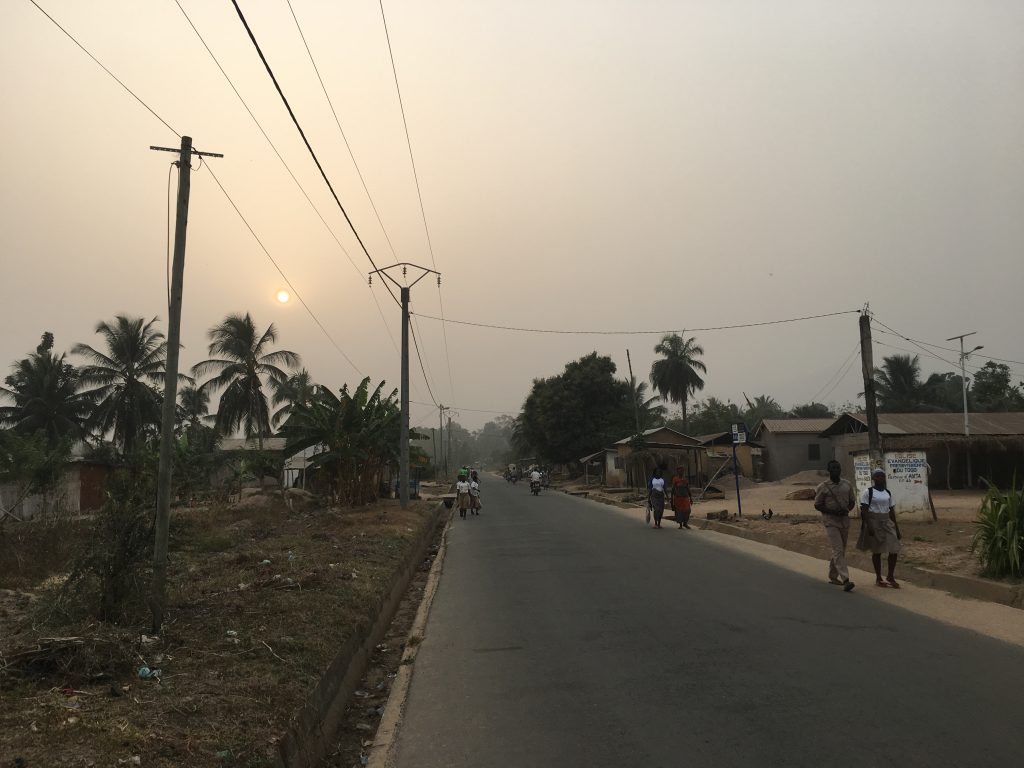
about a week after arriving in togo, i examined a six year old girl who presented with about one week of fever, diarrhea, emesis, and diffuse abdominal pain. i didn’t think much of it, and didn’t use gloves, because they aren’t really readily available in the clinic unless you go looking for them. i have been using them since. we did some blood work, and admitted her to the hospital. she tested negative for malaria and typhoid fever, the two most common etiologies of fever here. she also had significant pancytopenia (low white blood cells, red blood cells, and platelets), which is strange. we started her on the empiric antibiotic treatment for typhoid fever, but after two days she continued to have persistently high fevers, and her three year old sister also started developing the same symptoms. her sister was found to have the same lab results, and both also had very high transaminase (liver enzymes) levels as well. all these symptoms are consistent with viral hemorrhagic fever, specifically a terrible disease called lassa fever. to top it off, the younger girl started having profuse blood in her stool.
lassa fever is an arenavirus endemic to certain parts of west africa, spread by the aerosolized urine of a certain species of rat, which come into people’s homes during the dry seasons. it can also be spread between people via any body fluids. it was first described in the 1970s, and was named after a city in northeastern nigeria where there was a major outbreak. it is a viral hemorrhagic fever similar to ebola and marburg virus, as in addition to the nonspecific symptoms of fever, abdominal pain, diarrhea, emesis, and throat pain, etc, it can also cause bleeding from mucosal membranes and hypovolemic shock and end organ failure. so pretty scary. it has even been cited as a potential agent for bioterrorism. about 80% of people who get it actually don’t get sick enough to be hospitalized, but the mortality rate is about 50% for those who need hospitalization. even more scary, well over 50% of nosocomial infections (person-to-person in a healthcare setting) are fatal.
there had never been a positive case of lassa fever in this part of togo before. however, antibody studies have been done suggesting that the majority of togolese have been exposed to the virus at some point, meaning it exists and just hasn’t been isolated, likely simply due to lack of testing. the first person confirmed to have died from lassa fever in togo was an american physician assistant who was working in a mission hospital in northern togo and fell ill last year. he continued to deteriorate, and was evacuated to germany, where he sadly died. they then discovered he had lassa fever. he didn’t have any known exposures, so no one really knows how he contracted it.
after the girls had been sick for a while and after much discussion among the hospital staff, it was decided to send a blood sample to the central lab of the government in lome to test for lassa fever. it became apparent that it is quite the process. the local authorities have to sign off on the test being done after a meeting, and a medical provider has to escort the blood sample all the way to lome as it is considered biohazardous. this all took the better part of a week to arrange. once the blood sample finally made it there the confirmatory test by pcr was relatively quick. i read everything on the internet about lassa fever. interestingly, a number of studies about transmission in exposed, unprotected individuals came out of germany last year after the missionary from togo was evacuated to there with what was then an undifferentiated illness. there is an antiviral medication which helps some once infected, but it doesn’t really work very well, and isn’t exactly available on short notice to a rural hospital in togo.
thankfully, the test came back negative! i must admit though, in the intervening days i was quite scared that i might get it (and if i did, more likely than not, die an agonizing death). because the disease starts with nonspecific symptoms like sore throat, diarrhea and fever, i was constantly thinking that i might be coming down with it. i prayed more frequently and fervently than i normally do. it was an important reminder for me of the fragility of life, and that life can end before we want it to, a reality that usually isn’t as apparent in the west as it is in africa. i really needed to trust in God, and be reminded that my faith in Him is all i really have that matters, and all i really need. there are so many frivolous concerns in our lives that just don’t really matter when you think you might die soon. thank you to my amazing wife who comforted me when i was really on edge. we still don’t know what the girls had, but it was almost certainly something viral and nasty. thankfully they started to do better and we were able to send them home.

